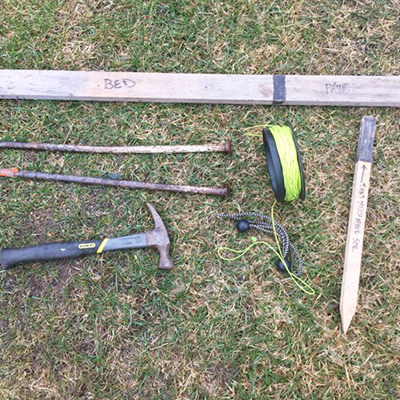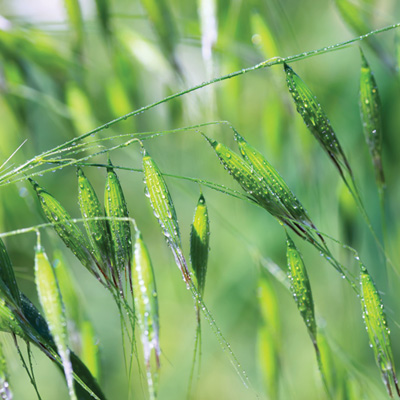By Ricky Baruc
Originally published February 1, 2018
In the mid-1980s I had a farm in upstate New York and grew 20 acres of organic vegetables with machinery. It was organic, but not sustainable both for the use of fossil fuel and high level of personal burnout. I lost my joy of farming and never thought I would go back into it for my livelihood.
Fast forward to 1996. My wife Deb and I purchased 30 acres in Orange, Massachusetts, consisting of forested and rocky abandoned pasture. We dreamt of building an off the grid home and raising a family, and running a non-profit education organization together. Not long into the project, we had the rude awakening that the non-profit would likely only be able to support one income.
I had a choice to go back to doing construction work, or farm. The choice was made, but how would I farm on land like this, the worst for vegetable farming and with few financial resources at hand? I had no choice but to be creative. People would drive by the farm and see me layering cardboard and mulch hay on one of our long-abandoned fields tall with weeds, wondering what I was doing.
Over the last two decades, through experimentation and with nature leading the way over machinery, I have been able to create a successful no-till farm that uses complementary techniques to eliminate fossil fuels and weeding, conserve water and labor, and let nature do more of the work. And, my relationship with the soil and plants has been enhanced in a way that is personally and deeply nourishing.
I am constantly amazed that there is a creature that lives in our soils that weighs 1/30th of an ounce and can move a two-ounce stone, equivalent to a 150-pound person moving a 9,000-pound boulder. When this same creature eats, its castings contain ten times the potassium, seven times the phosphorus, five times the nitrogen, three times the magnesium, 1.5 times the calcium, and 1.4 times the humus as what was ingested.
Worms, one of my greatest passions and why I continue to love farming after 30 years, proved to be my greatest allies in transforming forested, acidic land marginal for growing vegetables into balanced and rich agricultural soil. I am a worm farmer, not in the traditional sense of raising worms in bins and tanks, but throughout all of our growing beds. I like to think of my technique not as no-till, but worm-till. They do incredible work, and reproduce freely—so in essence I am farming worms by adding organic matter above the soil, and not tilling.
I tell visitors to our farm that building soil and growing on land that is not considered agricultural is critical to our food supply. The best soil in our western/central Massachusetts region was once a fertile valley filled with farms and four communities. It was taken by eminent domain and flooded in the late 1930s to create the Quabbin Reservoir in order to supply Boston, 80 miles east, with drinking water. This placed the best soil in our region below 38 square miles of water. Meanwhile, river bottomland, once so sought after, now gets 100-year floods three years in a row! Plus, chances are high of GMO drift when growing in an established farm community, and the price of good farmland when you are competing with development is usually out of the question. Additionally, urban land and lots often have poor fertility and toxins in the soil; the no-till practices I use and describe in this article are applicable in these settings as well.

Our farm’s motto is “Grow Food Everywhere,” and if we are truly to build food resilience for the long haul we cannot depend solely on existing farmland but must create community-based gardens and small farms in as many settings as possible. No-till growing practices that mitigate the impacts of climate change and promote a living soil rich with worms, microbes, and mycorrhizal fungi are critical in these times, and support a sacred relationship with the soil that feeds us.
Three techniques comprise our no-till toolbox at Seeds of Solidarity Farm, evolved over two decades, by necessity and with many lessons from nature. Used for different and complementary reasons, these methods build organic matter, promote beneficial soil microbes and mycorrhizal fungi, reduce weeds, conserve water and labor, and respond to climate change by helping to keep carbon in the earth. With these techniques, I am able to manage several acres of intensively planted crops by myself, and in a personally balanced way.
The cardboard method
This is our low-tech, high-productivity favorite. Our simple refrain for visitors is: “cardboard is a perfect worm food and worm castings are perfect plant food.” Cardboard is my way to open up new land, my weed control, moisture control, and worm food that results in nutrient rich castings—my primary fertilizer. One full pickup truck load of large sheets of cardboard from furniture, bike, or appliance stores will cover an area 35 by 100 feet. I’ve used cardboard in many ways, and while it can be laid on a new or existing field at any time of the year, here is one example of how I do it.

Let’s say it is early spring, even with a bit of snow still on the ground. I open large cardboard boxes with a box cutter so that it is one layer thick. Then, I lay the sheets on my field, ensuring that there is at least a three-inch overlap between pieces. You can remove any plastic tape now, but it is also fun to do so when that is the only thing left! I have my covering material nearby, be it mulch hay or inexpensive manure- partially decomposed horse manure is fine for this purpose. The mulch is to hold the cardboard in place and keep it moist. It is a good idea to cover as you go, so the wind doesn’t pick up the pieces. I lay cardboard right over my permanent raised beds; it will conform to their shape once it gets wet and begins to soften. If you know your soil is not very fertile, put an inch or two of finished compost or manure down before you lay the cardboard down to increase fertility as well as speed the decomposition of the cardboard with the infusion of worms and microbes.
Cardboard is a great method to use for transplants. In as little as two to three weeks, the cardboard will be soft enough to dibble through for planting seedlings. I grow a lot of bunching greens like kale and collards, and also use this technique with success for garlic, corn, and squash. At the same time, there is no rush- the cardboard will be your mulch, keeping weeds at bay and the life in the soil happy until you are ready to plant. This is also a great technique for fields that you wish to leave fallow to replenish; once the cardboard is fully decomposed months later, you can decide to cover crop or add more cardboard.
In the areas where I have been using cardboard for at least five years, the growing beds have become so established and rich that I no longer need additional compost and have never added lime; the cardboard and subsequent worm, microbial and mycorrhizal activity balances the soil and feeds the plants. I call it the “no-till self-sustaining cardboard method.” This is huge in regards to the cost of acquiring compost or other fertilizers, as well as labor time and cost.
My greatest joy is showing people around the farm to look at all of the areas where cardboard has been placed, and to see the look of amazement when folks see the amount of worms and the layer of castings under the cardboard. And, they are blown away to see that in most of our growing beds I can now stick my arm in up to my forearm with ease. I love to tell the story of moving a stack of cardboard from a gravelly parking area to find a quarter inch of worm castings below!

A common question that people ask is whether cardboard is safe. Our experience is that the use of plain brown corrugated cardboard (the hide glue used is high in protein which also attracts the worms) promotes incredible life in the soil. A telling year of the moisture moderating benefits of cardboard came in 2016 during that incredible season of drought. Two inches below the cardboard and without irrigation, the soil was moist and worms were active, and above, the crops were fine. Editor’s note: some organic certifiers prohibit cardboard that has ink in colors other than black. As always, check with your certifier if you are certified organic.
Occultation
My second tool in the Seeds of Solidarity Farm no-till toolbox is what many growers in Europe call occultation- the use of darkness. When I mentioned this in a group of ten other farmers in a multi-day meeting to share our techniques with Cornell University, they looked at me as if I was making it up and a little crazy. When I want bare ground to sow cover crops or scatter-sow seed for salad greens, such as in our hoophouses, I use silage covers. I use large silage covers to create darkness to rapidly turn fresh biomass into mulch and leave bare soil below.
Seedlings thrive in cardboard mulch, but to sow seeds directly without tilling, silage covers (also called bunker or panda covers) are a great method. These are much thicker and more durable than regular black plastic, last many years, and can be easily moved around a farm or garden as needed. Weeds or cover crops under the tarp die and become mulch that is transplanted into, or raked off and composted in the paths.
Silage covers come in sheets as large as 80 x 100 feet. (For an article on how to use and inexpensively acquire previously used silage tarps, see the article Re-purposed, used silage tarps in the September 2017 GFM.) Two months after placing a silage cover down, all the weeds have become a layer of broken-down biomass that I can transplant right into without needing to till or remake raised beds, an enormous labor saver! Weed seeds germinate in the warm, moist conditions generated by the tarp, but are then killed by the absence of light. This is why this methods leads to lower weed pressure. Because every time one tills, weed seeds that have never seen the light of day come to the surface, starting a new crop of weeds.
Once tillage stops, the cycle of bringing weed seeds up from below is broken. The beauty of silage covers is that the previous crop becomes a carpet of biomass that will create a barrier to many of the un-germinated weed seeds still in the bed. And as long as I add clean compost above the biomass into which I then plant, I have minimal weed issues.
I also use the silage covers in our four, 30 x 96 foot hoophouses where we do “cut and come again” greens production in succession through the season. I place the covers over the beds of greens after they have provided multiple harvests but are no longer marketable. The heat of the hoophouse really speeds up the breakdown of the crop residue below. All the green matter becomes brown and I cover this biomass with a half-inch layer of compost and sow the next crop of salad greens right into that.
Or, I can easily rake off the broken-down biomass whereas before I had to hoe the previous crop and remove it. I was somewhat concerned as to whether the silage covers would harm the life in the soil. So one day I looked under all of the dead biomass of the previous greens crop, after two weeks under a silage cover. The biomass was moist and the soil below it was cool, creating a perfect environment for worms to do what they love: eat, reproduce and poop, with a wonderful new layer of castings produced.
Silage tarps give me breathing room. Once the season is going, there are so many pieces of farming that demand attention. To be able to cover a field once crops have been harvested, wait until the plant material breaks down, then decide how to best use an area eases my mind, versus looking around, seeing weeds and stressing.
I have also found that silage tarps are a great way to incorporate cover crops into the soil, rather than tilling them in. This technique would be helpful to those who do use machinery during a wet spring, when you can’t get on the land to till in an over-wintered cover crop. Additionally, land that is covered with a silage tarp in early spring will help the land to warm up more quickly for planting, as well as activating the soil to nourish your plants to come.
As my third no-till tool, I use a variety of cover crops to suppress weeds, invite pollinators, fix nitrogen, and as a green manure. There are spots on the farm where I plant into crimped cover crops. Since Growing for Market has done some great articles on cover crops, I won’t elaborate on cover cropping here.

Besides tremendous soil building and other environmentally beneficial aspects, no-till helps with the stress factor of farming. There can be great stress associated with the feeling of “I’ve got to get these fields tilled now,” and then once tilled “I’ve got to get those plants or seeds in the ground before the weeds get a head start.” When I see all of our farmland planted or mulched in cardboard, regenerating with silage tarps, or in cover crops, I feel all is well and cared for. Time saved and a more connected relationship with the land allows for more time for relationships with my partner, family and friends.
For those out there who would like to use their hands more, and machinery less or not at all, decrease labor due to fewer weeds, reduce fertilizer inputs and eliminate release of CO2 from tilling, these techniques may be for you. It is heartening to see a movement towards mimicking nature, as evidenced by the many farming articles and conference presentations that focus on revering the life in the soil. As farmers, it is critical to keep ourselves healthy for the long haul, and leave land better than it was when we started working it. After farming for thirty years, the practices I’ve developed, arrived at, continue to explore, and love to share nourish me as a human being by creating an honoring relationship with the soil, one that enhances life.
Ricky Baruc and his wife Deb Habib offer several workshops each year at Seeds of Solidarity Farm in Orange, MA. 2018 workshops include ‘No-till, Yes Life!’ on Saturday May 12th. Contact them for more info and to register. Ricky is also available for consulting. They also founded and run a non-profit organization, Seeds of Solidarity Education Center, that “awakens the power among youth, schools, and families to Grow Food Everywhere to transform hunger to health, and create resilient lives and communities.” See www.seedsofsolidarity.org, 978-544-7564, or contact [email protected].

 In recent years a great deal of interest has been building around the question of how to run a profitable, chemical-free farm without tillage. We all know what tillage does to soil, but the available information about how not to till on a commercial market garden scale has felt impractical or unusable, much of it geared towards home gardeners or mega grain operations in chemical monoculture. There has been, to be sure, very little in the way of guidance on how to approach a profitable, diversified no-till farm.
In recent years a great deal of interest has been building around the question of how to run a profitable, chemical-free farm without tillage. We all know what tillage does to soil, but the available information about how not to till on a commercial market garden scale has felt impractical or unusable, much of it geared towards home gardeners or mega grain operations in chemical monoculture. There has been, to be sure, very little in the way of guidance on how to approach a profitable, diversified no-till farm. 


 My wife, Megan, and I grow cut flowers on half an acre of a twelve-acre property in Hurdle Mills, NC. We are in the heart of tobacco country. When we bought our property in 2013, our sales contract stipulated that the farmer had the right to harvest that year’s tobacco crop. Based on our best guesses, that marked at least the 100th consecutive year of tobacco/wheat rotations on this property. The farmer was kind enough to disc in the tobacco stubble after the harvest.
My wife, Megan, and I grow cut flowers on half an acre of a twelve-acre property in Hurdle Mills, NC. We are in the heart of tobacco country. When we bought our property in 2013, our sales contract stipulated that the farmer had the right to harvest that year’s tobacco crop. Based on our best guesses, that marked at least the 100th consecutive year of tobacco/wheat rotations on this property. The farmer was kind enough to disc in the tobacco stubble after the harvest.
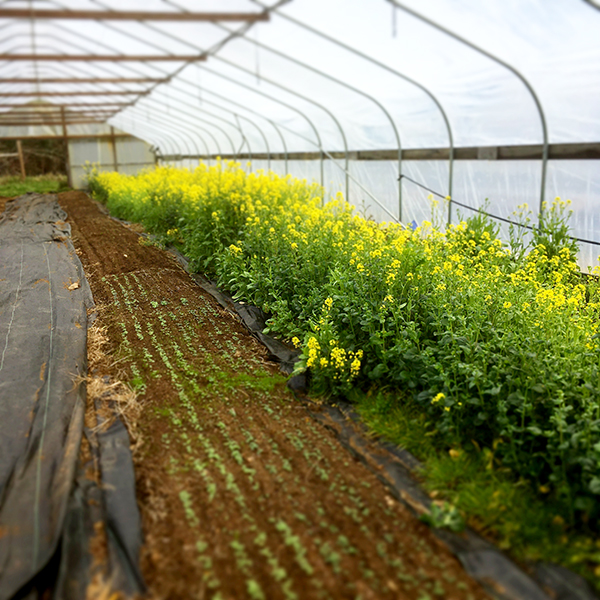 If you’ve been a subscriber to Growing For Market (or even if you haven’t), you’re probably familiar with the many advantages of no-till agriculture. No-till methods can reduce a farm’s carbon footprint, promote complex soil biology, and preserve and build organic matter.
If you’ve been a subscriber to Growing For Market (or even if you haven’t), you’re probably familiar with the many advantages of no-till agriculture. No-till methods can reduce a farm’s carbon footprint, promote complex soil biology, and preserve and build organic matter.
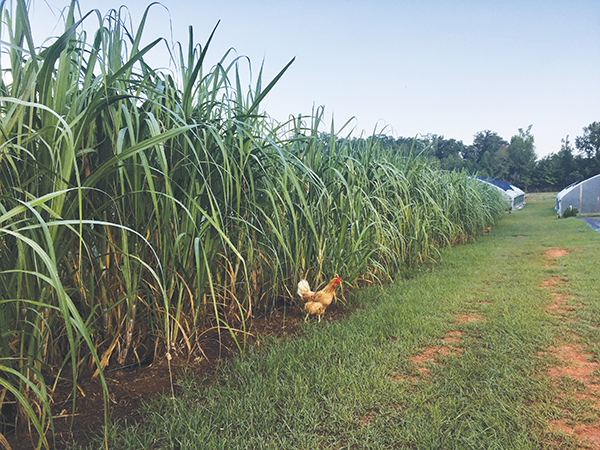 Julia Asherman appeared on my radar screen a number of years ago because she was a regular presence at the Southern Sustainable Agriculture Working Group conferences where I’ve spoken many times. Colleagues pointed her out to me as a person to watch because she was tough and smart and she was going to make something of herself as a farmer. We became conference buddies. So, when I had the good fortune to get invited to speak at the Georgia Organics Conference in Athens this winter, I knew right away I wanted to take that opportunity to visit Julia at her place, Rag & Frass Farm in Jeffersonville, Georgia.
Julia Asherman appeared on my radar screen a number of years ago because she was a regular presence at the Southern Sustainable Agriculture Working Group conferences where I’ve spoken many times. Colleagues pointed her out to me as a person to watch because she was tough and smart and she was going to make something of herself as a farmer. We became conference buddies. So, when I had the good fortune to get invited to speak at the Georgia Organics Conference in Athens this winter, I knew right away I wanted to take that opportunity to visit Julia at her place, Rag & Frass Farm in Jeffersonville, Georgia.
 Farmer to Farmer Profile
Farmer to Farmer Profile
 There are good reasons why quick-growing greens crops have gotten a lot of attention in no-till systems. But I wanted to try growing some less common no-till crops, so I grew test plots of potatoes and sweet potatoes on my farm this past year.
There are good reasons why quick-growing greens crops have gotten a lot of attention in no-till systems. But I wanted to try growing some less common no-till crops, so I grew test plots of potatoes and sweet potatoes on my farm this past year.
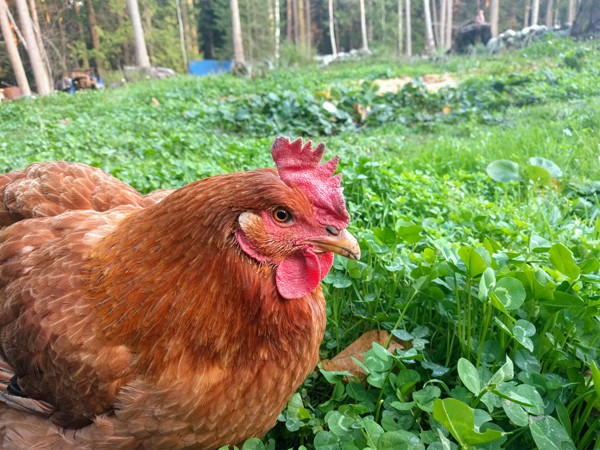 The modern age could very well be termed the age of carbon. We have increased the amount of carbon dioxide (CO2) in the atmosphere by more than a third since the Industrial Revolution began. A gas that keeps heat from the sun contained within the earth’s atmosphere, CO2 makes up more than three-quarters of the greenhouse gas emissions in the world. At the same time agriculture is currently experiencing a carbon crisis, with 50-70% of the world’s carbon in farmland soils off-gassed into the atmosphere due to tillage. Carbon is the single most essential element in soil fertility as it aids soil structure development, water retention, nutrient retention, and biological processes.
The modern age could very well be termed the age of carbon. We have increased the amount of carbon dioxide (CO2) in the atmosphere by more than a third since the Industrial Revolution began. A gas that keeps heat from the sun contained within the earth’s atmosphere, CO2 makes up more than three-quarters of the greenhouse gas emissions in the world. At the same time agriculture is currently experiencing a carbon crisis, with 50-70% of the world’s carbon in farmland soils off-gassed into the atmosphere due to tillage. Carbon is the single most essential element in soil fertility as it aids soil structure development, water retention, nutrient retention, and biological processes. 
 When we started farming in 1983, there were few models of organic, horse-powered market gardening. So we used the traditional practices for growing field crops here in north-central Pennsylvania, preparing a seedbed with the moldboard plow, spring tooth harrow and cultipacker. We quickly realized we needed to put a whoa on moldboard plowing to dependably establish dryland produce.
When we started farming in 1983, there were few models of organic, horse-powered market gardening. So we used the traditional practices for growing field crops here in north-central Pennsylvania, preparing a seedbed with the moldboard plow, spring tooth harrow and cultipacker. We quickly realized we needed to put a whoa on moldboard plowing to dependably establish dryland produce.
